To celebrate the growth and development of the RSC Applied Polymers community and to highlight the remarkable authors who continue to contribute their high quality work to the journal we would like to share the opinions and insights of these authors through this introductory blog post. Once dubbed #RSCAppliedfirst50, our blog posts aim to give a voice to the authors behind the research and hope that their insights might shed light upon growing challenges and progress in polymer science and its applications.
In this edition, we hear from Hayden E. Fowler and Max Saccone in a short introduction about their study ‘Advances in Vat Photopolymerization: Early-Career Researchers Shine Light on a Path Forward’
An introduction to ‘This perspective combines the ideas of many of these junior researchers to highlight some recent and exciting developments, and to present a vision for the future of the field.’ by Hayden E. Fowler and Max Saccone
The focus of this perspective is vat photopolymerization (VP), an additive manufacturing technique that enables rapid light-based fabrication of 3D objects from liquid resins. VP was developed in the 1980s, but recently this technique has expanded dramatically in scope in terms of the accessible materials/properties, printer configurations, and applications where VP-derived materials are useful. The research community focused on VP techniques is also in a moment of coalescence. In August 2024, the first ever Gordon Research Seminar (GRS) on Additive Manufacturing of Soft Materials was held at Bryant University as a prelude to the second iteration of Gordon Research Conference (GRC) on the same topic. The GRS, open to graduate students and postdocs, brought together many junior researchers, who, as their careers progress, will be defining the future of the VP field. This perspective combines the ideas of many of these junior researchers to highlight some recent and exciting developments, and to present a vision for the future of the field.
Co-author Hayden E. Fowler offered this reflection on incidental connections and building community along with lead author Abhishek Dhand:
“I shortly overlapped with Abhishek during my graduate studies at CU when Prof. Burdick joined the department. We had some interactions when I was training him and coordinating the use of one of our (Prof. White’s) instruments for mechanical characterization of polymers, and I enjoyed working with him. A couple of weeks before GRC, I saw that his recent work on printing highly entangled hydrogels was published in Science, and I was very excited for him. I even presented the paper as my literature review for a group meeting at Sandia, and I thought it was awesome that I was now also working within the realm of vat photopolymerization such that I could stumble upon his incredible work in such an organic way.
On the first night of the GRC, during a social hour, I saw Abhishek was there. I honestly had no idea if he would remember me since our overlap at CU was so brief, and all I really did was train and coordinate instrument usage with him. But he completely remembered me and even expressed appreciation for the help I provided at the time, and I shared my admiration of his work. We had some great scientific conversations from there, and I ended up meeting a lot of other early career researchers through my interactions with him, including many of the contributing authors on this perspective piece. When the idea of this work was proposed, I was immediately on board and even able to leverage my position to help contact other early-career researchers from the national lab space that had attended the GRS/GRC to contribute. This experience has made me appreciate the community of early-career researchers in vat photopolymerization that we are building, and I’m excited to be involved and help strengthen it.”
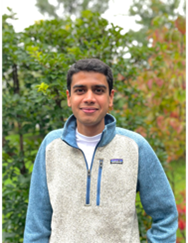 Abhishek P. Dhand |
Abhishek P. Dhand is a PhD student in Bioengineering at the University of Pennsylvania. His research focuses on developing new hydrogel resins for light-based additive manufacturing and implementing them for biomedical applications ranging from 3D disease models for drug discovery to hydrogel-based tissue adhesives. |
 Ren H. Bean |
Ren H. Bean is a postdoctoral researcher at Sandia National Laboratories. He earned his Ph.D. from Arizona State University (ASU), where he worked under the guidance of Professor Timothy E. Long. His doctoral research focused on employing colloidal feedstocks for the Vat Photopolymerization (VPP) of high molecular weight polymers. His research interests span additive manufacturing, engineering polymers, chemical recycling, and photochemistry, with a particular emphasis on developing innovative materials and processes that promote environmental responsibility. |
 Viviane Chiaradia |
Viviane Chiaradia is a Research Fellow in the Department of Chemistry, RCSI University of Medicine and Health Sciences, Dublin, Ireland. |
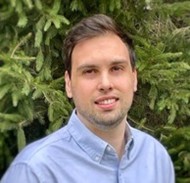 Alex J. Commisso |
Alex J. Commisso is currently a postdoc at Sandia National Labs working in polymer chemistry with a focus on photopolymerizations with applications in additive manufacturing. Alex graduated with a PhD in chemical engineering from the University of Michigan in 2023. He spent his last 3 years of his PhD away from Ann Arbor as a visiting researcher at Monash University in Melbourne, Australia where he developed thermoplastic resins using unique cyclic allylic sulfide monomers for use in stereolithographic additive manufacturing. Alex is originally from New York and received his undergraduate degree in chemical engineering from the University at Buffalo. |
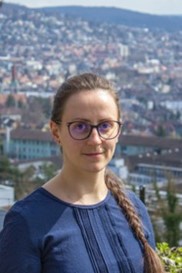 Dalia Dranseike |
Dalia Dranseike recently completed her PhD at ETH Zurich, specializing in biofabrication for tissue engineering and living materials. Her research focuses on developing hydrogels for cell encapsulation and bio-based fabrication techniques. She has worked on projects spanning microscale biomaterials for biomedical research to large-scale living structures in collaboration with architects and engineers. She is currently contributing to the fabrication of living exhibits for the Venice Biennale and Milan Triennale. Outside the lab, she enjoys playing volleyball, including at the GRC, and spending time outdoors. |
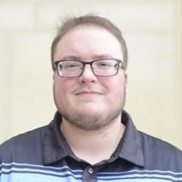 Hayden E. Fowler |
Hayden E. Fowler is currently a postdoctoral researcher at Sandia National Laboratories in Albuquerque, New Mexico. As a member of the Advanced Materials Laboratory, Hayden’s research interests consist of developing materials for high performance and/or functional responses using advanced manufacturing techniques, including vat photopolymerization. Prior to joining Sandia, Hayden completed their PhD in Chemical Engineering at the University of Colorado Boulder exploring programmable deformation in liquid crystalline elastomers under the advisement of Prof. Tim White. In their free time, Hayden enjoys playing guitar, video games, and art in the form of acrylic painting, colored pencil, and graphic design. |
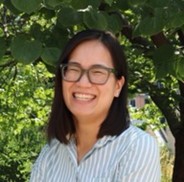 Julia M. Fraser |
Julia M. Fraser is a materials chemistry PhD student in Prof. AJ Boydston’s group at the University of Wisconsin-Madison. She works on 3D printing piezoelectric particles in photoresin and multimaterial vat photopolymerization and is interested in developing new materials and methods for 3D printing. Outside the lab, she plans community building events for the UW-Madison chemistry department, does stand-up comedy, and plays volleyball. |
 Holden Howard |
Holden Howard is a polymer scientist working at Lawrence Livermore National Lab in the Materials Engineering Division. His primary focus is functional material design for light based additive manufacturing techniques. He received his bachelor’s in chemistry and masters in polymer chemistry from the University of Oregon. In his free time, he enjoys skiing, backpacking, and watching basketball. |
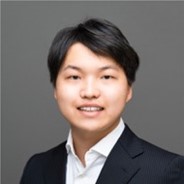 Takashi Kaneko |
Takashi Kaneko is a Chemistry PhD candidate at the University of California Santa Barbara, focusing on 3D printable hydrogels with photoclick chemistry, under Profs. Javier Read de Alaniz and Craig Hawker. Outside the lab, Takashi enjoys hiking the California coast and exploring new restaurants in town. One of his favorite memories from the Gordon Research Conference was a poster session that turned into an impromptu brainstorming jam. |
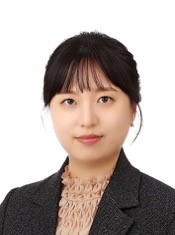 Ji-Won Kim |
Dr. Ji-Won Kim received her B.S., M.S., and Ph.D. degrees in the Department of Chemical and Biomolecular Engineering from Korea Advanced Institute of Science and Technology (KAIST). She then conducted postdoctoral research in the Department of Chemistry at the University of Texas at Austin in Dr. Zachariah A. Page group. She is currently an Assistant Professor in the Department of Chemical Engineering at Kyungpook National University (KNU). Her research interests include DLP-based 3D printing, microfluidics, and soft matter systems. |
 Jason M. Kronenfeld |
Jason M. Kronenfeld is a Chemistry PhD candidate at Stanford University, researching vat photopolymerization (VP) 3D printing under Dr. Joseph M. DeSimone. His work focuses on developing high-resolution continuous liquid interface production (CLIP) techniques for scalable micro-fabricated particle production. He plans to graduate in August and apply his expertise in polymeric materials to science policy, 3D printing in industry, or a start-up role. Outside the lab, Jason is an avid social dancer and waltz instructor.He is continually inspired by the groundbreaking work and camaraderie of his friends and colleagues from the 2024 GRC on Additive Manufacturing of Soft Materials and is excited for a future of additive manufacturing driven by these brilliant minds. |
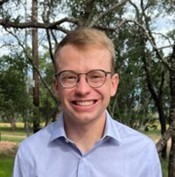 Keldy S. Mason |
Keldy S. Mason is currently a PhD student at the University of Texas at Austin in Dr. Zachariah Page’s research group. He received his bachelor’s degree from Lewis & Clark College (2020). His research focuses on controlling architecture and properties from molecular to macro scales for advanced manufacturing. He is particularly interested in using multicolor vat photopolymerization and ring-opening metathesis polymerization (ROMP) to develop advanced polymer networks |
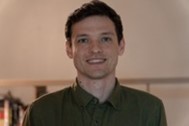 Connor J. O’Dea |
Connor J. O’Dea received his BSc in Biochemistry from Kennesaw State University in 2018. He is currently pursuing a PhD at the University of Texas at Austin under the supervision of Prof. Zachariah Page. His research focuses on developing advanced photosystems through the synthesis of novel photosensitizers and resin formulations for vat photopolymerization. In particular, he explores the use of visible light to achieve high-resolution structures and enhance material compatibility, broadening the scope of light-based additive manufacturing. |
 Fred Pashley-Johnson |
Fred Pashley-Johnson is a final year PhD student under the joint supervision of Christopher Barner-Kowollik (Queensland University of Technology) and Filip Du Prez (Ghent University). His research focusses on using light as a precise tool to control chemical reactions by simply changing the colour of light that they are irradiated with – he then applies the fundamental knowledge gained from physical chemistry to additive manufacturing and materials science. In his free time, Fred can be found trying to summit nearby mountains or enjoying a craft beer. |
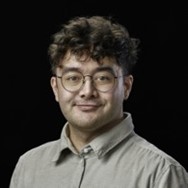 Dominique H. Porcincula |
Dominique (Dom) H. Porcincula is a staff materials research engineer at Lawrence Livermore National Laboratory, where the focus of his work revolves around development of stimuli-responsive materials for various additive manufacturing techniques. He is also co-PI of an effort exploring volumetric additive manufacturing of multimaterial glass. Outside of lab, Dom is an avid traveler and linguistics enthusiast, and also enjoys a good pastry and experimenting with different types of crafting. |
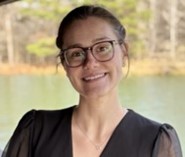 Maddison I. Segal |
Maddison I. Segal is a PhD candidate in the Mechanical Engineering & Materials Science Department at Duke University. Her research interests include designing novel degradable materials for the additive manufacturing of medical devices. With a background in biomedical engineering, Maddison hopes to use her passion for engineering to improve patient lives. Maddison spends her free time making nondairy ice cream, baking desserts, and hiking with her golden retriever Jax. |
 Siwei Yu |
Siwei Yu is from Shanghai, China. She received a BA in Chemistry from UC Santa Barbara, where she under the supervision of Dr. deVries. Now a member of Alshakim Nelson’s lab at University of Washington, she focuses on designing and synthesizing hyperbranched poly(glycerols)s as components of stereolithography 3D printing resins. Outside of the lab, Siwei enjoys baking, playing tennis, and traveling. |
 Max A. Saccone |
Max A. Saccone is an Assistant Professor in the Department of Mechanical Engineering at CU Boulder. Max’s research focuses on using 3D printed polymers as reactors or reactants in subsequent materials conversion processes that yield architected functional materials ranging from metals to ceramics to battery materials. Max is an avid rock climber and runner, and finds meaning in environmental stewardship in many forms, from trail maintenance to sustainability-focused research. |
Advances in vat photopolymerization: early-career researchers shine light on a path forward
RSC Appl. Polym., 2025, Advance Article. DOI:10.1039/D5LP00010F
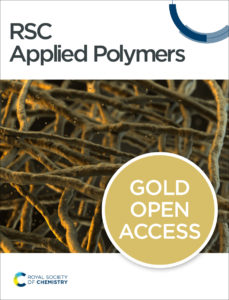 |
RSC Applied Polymers is a leading international journal for the application of polymers, including experimental and computational studies on both natural and synthetic systems. In this journal, you can discover cross-disciplinary scientific research that leverages polymeric materials in a range of applications. This includes high impact advances made possible with polymers across materials, biology, energy applications and beyond.
|



